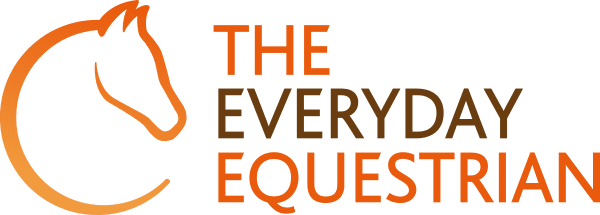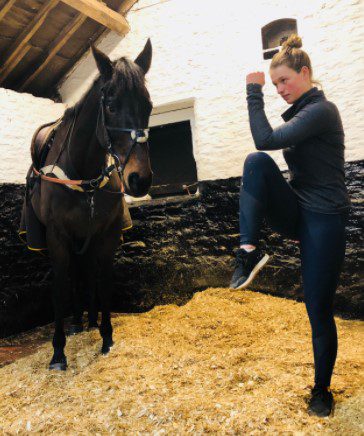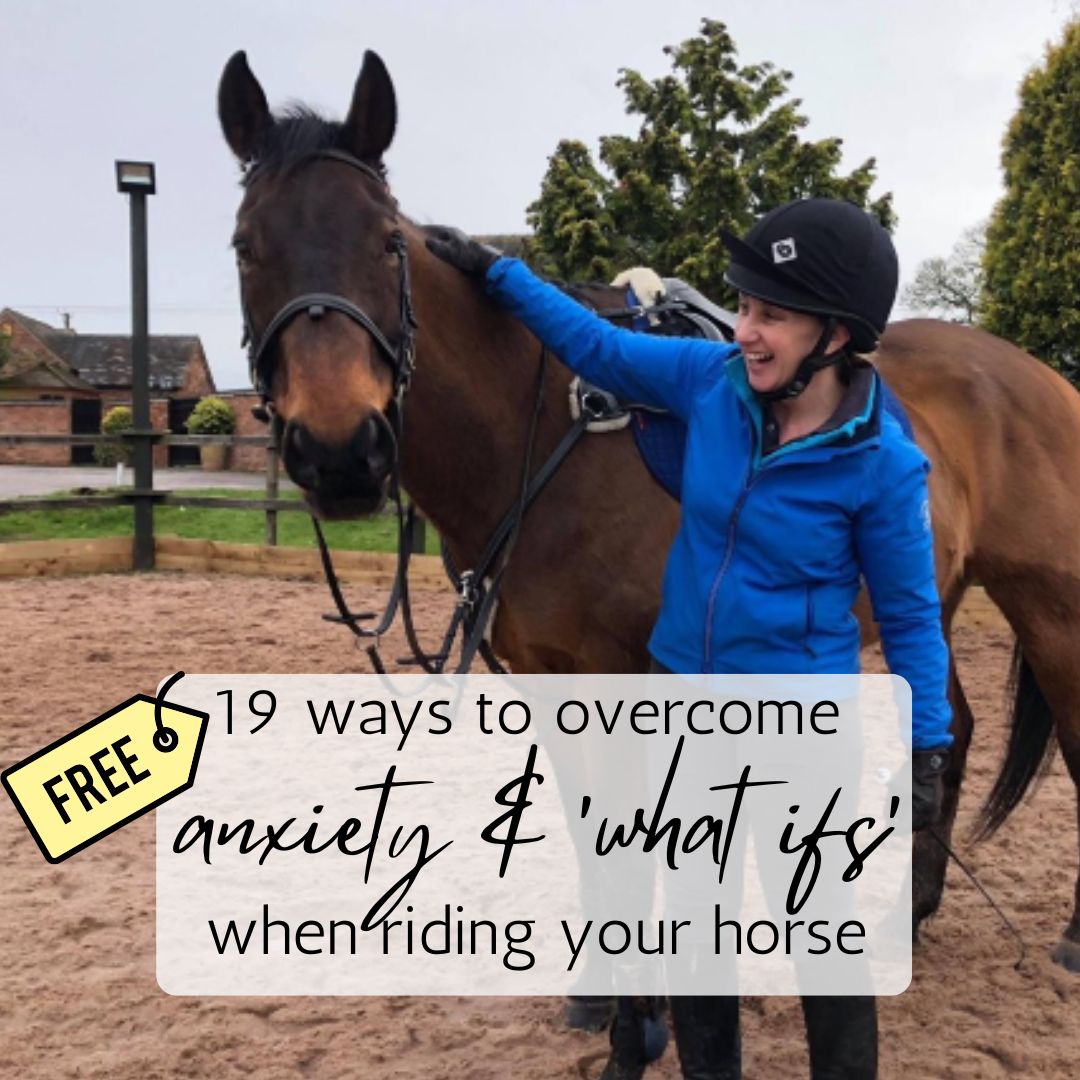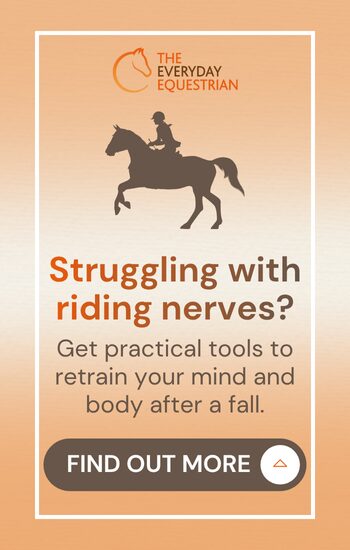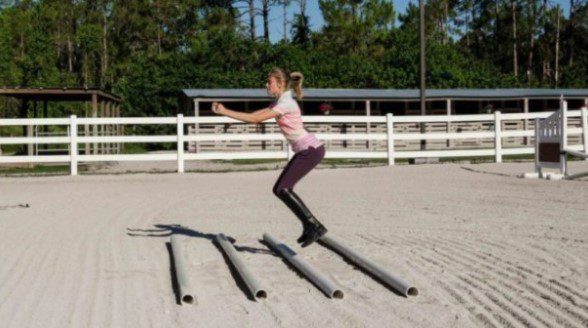
As so many of us try to fit our horses and riding in and around work, family life, and a whole host of other activities we often forget about working and improving on ourselves both mentally and physically. It is important we change our body from work, mucking out mode, etc…. into riding mode which can often seem like a time-consuming or daunting task. It is however much easier and less time-consuming than you would expect. Even 10-15 mins a day taking part in specific stretches for horse riders can make a world of difference.
It’s amazing how taking part in stretching exercises on a daily or weekly basis can really help improve your riding. Many riders choose to stretch right before they ride which certainly does have its benefits however focussing on a daily or weekly exercise regime is where you will notice the best results. It is true to say that riders who stretch and exercise regularly usually experience the best outcome overall. Stretching can significantly improve balance, symmetry, and security. It can assist with suppleness, mobility, and postural control effectively helping to reset your body ready for riding.
Waiting to warm yourself up once you are already in the saddle can also eat away considerably at your riding time. Time that could otherwise be spent on ACTUALLY riding!
Let’s take a closer look at 5 simple exercises that can really help you reset your body (and mind) before riding.
The Pelvic Clock
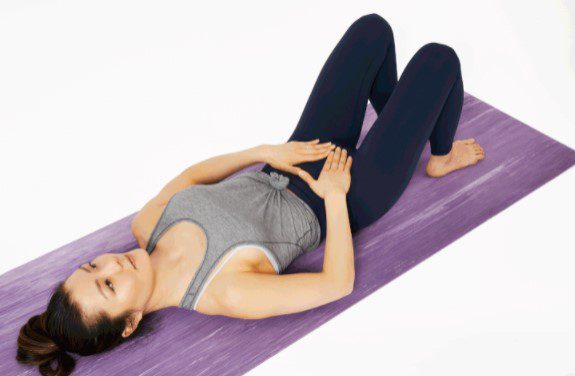
This is an excellent exercise for improving mobility and suppleness in the pelvis and lower back. It is a simple exercise that can easily be carried out at home and doesn’t require any fancy equipment to achieve the desired results.
Start by lying down flat on your back with your knees bent up hip-width apart and place either a pilates overball (if you have one) or a folded up cushion between your knees.
Imagine your body is the centre of a clock face with your head at 12pm and your feet at 6pm. Gently rock your pelvis towards 12pm and then back to 6pm. Next, begin to rock your pelvis side to side between 3pm and 9pm.
When your pelvis starts to feel a bit looser try to rotate your pelvis in a circular motion from 12pm, 3pm, 6pm, and 9pm. Rotate clockwise for a few circuits and then reverse circling in an anti-clockwise motion.
Check out this great video by Lindsay of EquiPilates for a true visual of how this exercise works – Click HERE!
Squats

It is fair to say that squatting is not everyone’s idea of fun however it can be a great tool for addressing lower leg instability in riders. A strong and secure lower leg is the key to achieving good posture when in the saddle and carrying out a series of squats can help to open up the hips and encourage increased flexibility.
Squats, in theory, are very simple to do however a proper technique is required to reap the benefits. The key to a good squat is to ensure you keep your back straight, knees bent in front of you and your hips and butt back!
You will know when you have carried out a squat correctly when you try to stand back up again. You should be able to stand back up in a smooth, balanced manner without shifting your weight. If you find you are using momentum to get up by leaning forward or you lose balance and need to redistribute your weight then the squat has not been carried out correctly.
The great thing about this exercise is that you can do it almost anywhere which means there are no excuses not to stretch before you ride.
Check out this great video from Stable Spice to show you how – Click HERE!
Upper body and shoulder stretches
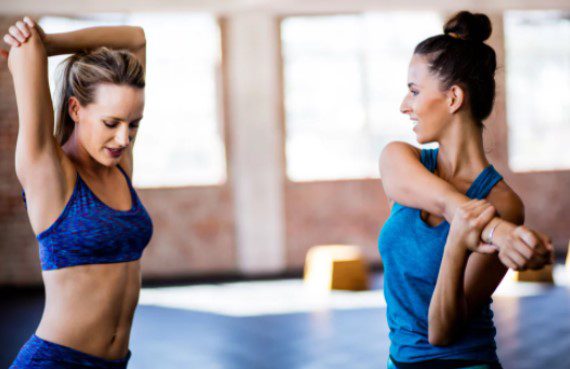
There are a series of stretches that can really help loosen up the upper back and shoulders to help you achieve good riding posture. Many riders find it difficult to relax their shoulders in particular. This leaves them tense and less mobile which in turn can massively affect the horse’s way of going.
Here are a few stretches that you can try to relieve some of the tension in the upper body. Like with most of the other exercises we have mentioned these are stretches that are easy to do. They don’t take up much of your time and can be done almost anywhere whether you are at home, work, or at the yard.
- Neck stretches – rolling your neck from left to right
- Arm Stretches – behind your back and across your body side to side
- Childs Pose
- Upward Facing Dog
Check out this video from Dressage Rider Training to give you some great ideas for stretches to loosen up your shoulders and upper back – Click HERE!
Downward Dog
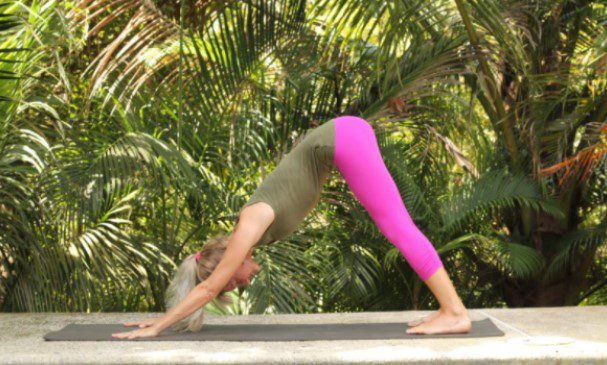
The downward-facing dog is a stretching exercise that is highly beneficial for horse riders and you’ll be hard pushed to find a pilates instructor that does not include this exercise within their lesson plan.
This exercise is ideal for stretching out the calves and muscles which is ideal for the dressage rider that wants to achieve a longer leg and elegance in the saddle. Or a jump rider that requires their calf to sink down and absorb the movement over a fence. The downward dog will help you with keeping your lower leg still and relaxed whilst promoting suppleness.
Start by standing up straight, folding from your hips with your hands stretched out to the floor in a ‘V’ shape. Make sure your hips are in the air. Bend one knee in at a time and stretch the opposite heel to the ground. You should feel a strong stretch through your heel and ankle.
Check out Yoga with Adrienne HERE for a step by step guide to the Downward Dog.
Abs Stretches
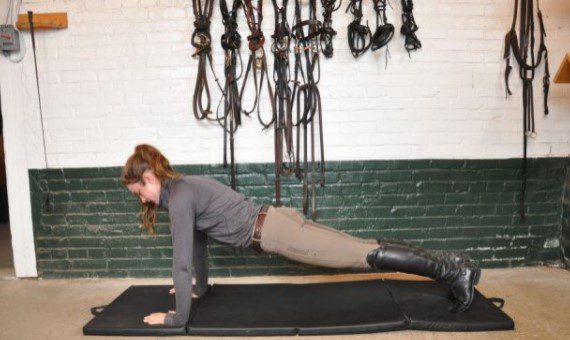
As horse riders, one of the most common areas of the body we often hear about being utilised during riding is our core muscles. Core strength for the most part is an area that most riders will need to work on for stability and balance. Abs exercises can be a great tool for strengthening and stabilising the core muscles.
When we hear the words ‘abs stretches’ we often associate this with meaning strenuous sit-ups and crunches exercises which doesn’t necessarily work well for everyone. The good news is there are many variations of abs exercises that can be carried out to achieve the same results.
Abs exercises can be a great way to help gain an independent seat and light upper body control. Many riders find it very difficult to move one side of the body without compromising the other and abs exercises can be a fantastic tool for allowing body parts to move independently rather than collectively.
Check out this great stabilising abs video from Ready To Ride for some inspiration – Click HERE!
